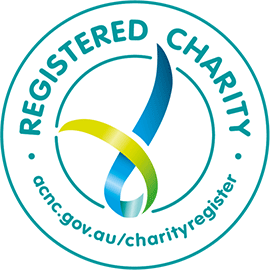A Bible in every language
Bible Society is involved in a wide variety of translation work. In Australia our aim is to see Indigenous people come to a relationship with God through his word and to live committed and growing Bible-focused lives.
Types of Translation Projects
We fund a variety of different translation projects, many of which are in partnership with other groups and organisations across Australia. These are some of the translation efforts we're involved in:
Publication
Provides specialised printing services to language groups who have completed translation, includes: typesetting, design/layout and print production.
Audio Scripture
Enables recording of translated Scripture through audio recording workshops as well as supporting Oral Bible Translation (OBT) – a method that is perfect for oral languages without written orthography.
Engagement Resources
Develops and publishes culturally sensitive Bible resources for ministry to children, youth and those in hospital and prison as well as developing digital resources.
Translation Consultancy
Provide specialist consultancy support for Bible Translation Projects in multiple languages to ensure the resulting translation is both accurate and clear.
Project Reporting to Keep You Involved
Funding Indigenous translation and engagement projects means you will be recognised as an official Funding Partner. Translation takes a long time but funding partners will be provided with regular updates on the progress of their projects. Here's what to expect over the course of the coming weeks and months:
Project Preparation
Upon donation one of our team will contact you to help connect you to a suitable project
Project Begins
Our Translation Projects
We choose each project based on several key factors however the most significant factor is having the commitment of local translators and the support of the local church community. Without this these projects would not bear fruit. Once this commitment is assured Bible Society and partner organisations are able to provide the support and resources needed to bring these projects to fruition.
-
Potential
This indicates Indigenous languages where we feel we could potentially do some work. There are many factors to consider when evaluating translation work with a particular language. One of the most vital is the openness and willingness of the community to engage in the project.
-
Active
Active indicates a language where we currently have translation projects that are in-progress
-
Partial Translation
This indicates a language where translation work has been undertaken and they now have the vast majority of the New Testament translated. Further work may take place in the future to increase accessibility of scripture in this language.
Transformation through translation
Desire for Translation
We work in response to a request from the language community and/or local church for Scripture translation
Personal Discipleship/Spiritual Maturity
Isaiah 55: 10-11 says: “As the rain and the snow come down from heaven, and do not return to it without watering the earth…so is my word that goes out from my mouth: It will not return to me empty, but will accomplish what I desire and achieve the purpose for which I sent it.” Having Scripture in a language encourages spiritual growth and maturity.
Cultural Identity & Connection
Each language has a unique cultural expression and for many speakers their language is part of who they are. When you speak a particular language you are representing not just yourself but your family and community. Bible Translation in Indigenous languages enable speakers to connect with Christ in a culturally appropriate way, he becomes like a brother and God speaks their language.
Empowerment
Translators are acknowledged as the experts in their languages and are the key partners in the projects. In this way they are empowered to see themselves as significant contributors to something special for their communities.
Reconciliation and Healing
The Bible is the story of God reconciling humanity to himself through his son Jesus Christ. Indigenous Bible Translators learn that God loves them as Aboriginal people and that the Gospel is not just for English speakers. For many Indigenous translators being able to work closely together with non-Indigenous Christians on the common goal of translation brings both unity and healing.
Translate the Word into someone's heart language today
Frequently Asked Questions
HOW MANY INDIGENOUS LANGUAGES ARE THERE IN AUSTRALIA?
It is estimated at the time of white settlement in Australia, there were in excess of 300 distinct indigenous languages spoken among the Aboriginal and Torres Strait Islander population. Today there are only approximately 120 of these still used at some level, with at least 50 languages spoken by a significant number of people.






